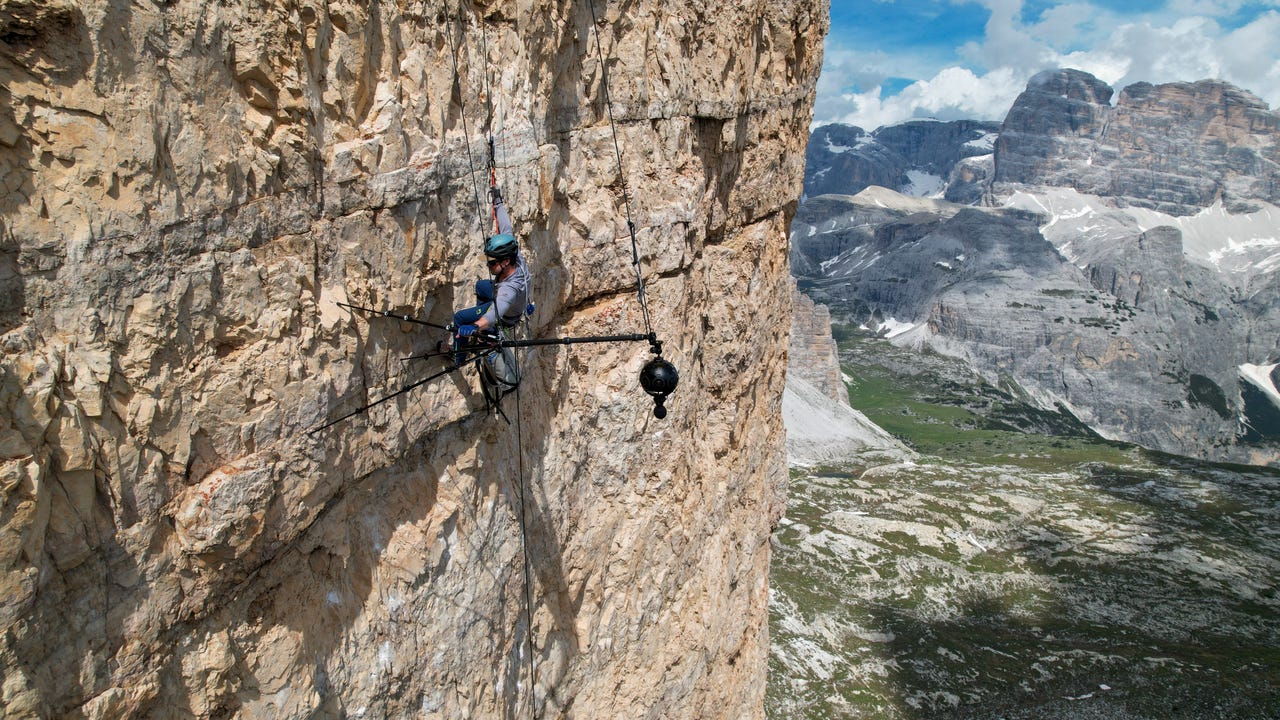'ZDNET Recommends': What exactly does it mean?
ZDNET's recommendations are based on many hours of testing, research, and comparison shopping. We gather data from the best available sources, including vendor and retailer listings as well as other relevant and independent reviews sites. And we pore over customer reviews to find out what matters to real people who already own and use the products and services we’re assessing.
When you click through from our site to a retailer and buy a product or service, we may earn affiliate commissions. This helps support our work, but does not affect what we cover or how, and it does not affect the price you pay. Neither ZDNET nor the author are compensated for these independent reviews. Indeed, we follow strict guidelines that ensure our editorial content is never influenced by advertisers.
ZDNET's editorial team writes on behalf of you, our reader. Our goal is to deliver the most accurate information and the most knowledgeable advice possible in order to help you make smarter buying decisions on tech gear and a wide array of products and services. Our editors thoroughly review and fact-check every article to ensure that our content meets the highest standards. If we have made an error or published misleading information, we will correct or clarify the article. If you see inaccuracies in our content, please report the mistake via this form.
Scared of heights? Alex Honnold's latest climb is pure torture in VR


Cameraman rigs the Insta360 Titan to capture Alex Honnold in the Alps.
If the rock-climbing film Free Solo made your stomach churn, brace for what's next for Alex Honnold: Virtual reality. In a new two-part experience, the rock climber, known for major ascents without ropes, will be climbing the Alps in full 10K 3D.
ZDNET Recommends
The film from Jonathan Griffith Productions, which is called Alex Honnold: The Soloist VR, is now available on Oculus TV through the Meta Quest VR headsets. A behind the scenes documentary about the VR film, Making the Soloist VR, is also available on Red Bull TV. But the tech behind the project, and the techniques that made it happen, are just as compelling, offering a tantalizing look at the next iteration of 3D filmmaking, one that's already crossing the threshold into the consumer world.
It starts with understanding where VR might be additive to the viewing experience, something early VR filmmakers haven't always grappled with in a productive way.
"There is nothing that can quite compare in terms of immersion into my world of climbing as VR. In TV, you still have a barrier… where you know you're not physically there. But in VR, you are so fully immersed and you are right there and there is nothing between you and the scene. I want to share that immersion with people," said Griffith.
An action-oriented, environmentally rich world like rock climbing is tailor-made for such immersion, but the difficulties of filming in a vertical environment, a major challenge for conventional filmmakers, are daunting when it comes to VR. To help tackle them, the producers started with a very capable piece of tech, a 10k 3D Insta360 Titan camera. Action cam fans may recognize the brand from its line of successful action cams, many of which capture 360 degree footage that can be edited into any frame of reference the end user chooses. The camera has 8 lenses and shoots 10K 3D video using Micro Four Thirds sensors, which have become enormously popular among filmmakers for their small sensor size and creative capabilities.
The Titan camera isn't exactly light. Owing to its multiple lenses the camera weighs in at 5.5kg (about 12 pounds), a cumbersome load to tote up a cliff face. In fact, Griffith and his team weren't convinced it was the right tool for their camera operators. But as Griffith explained, it was well worth the effort.
When you're trying to recreate reality for the viewer, you need to shoot with the best capture system available and for the moment that is the Titan. Bigger sensors, better optics and the ability to shoot at 10-bit changes the game for me. The better the capture quality, the better the experience for the viewer. Even though it was a huge logistical and physical effort to bring the Titan into these locations, I'm really glad we did.
A rigging system for hanging the camera next to the cliff face was the next challenge.
"The rigging for the Titan, or for any VR camera for that matter, is pretty complicated. Overall, the rigging system probably doesn't look like much, but it took a year to fine tune and is an integral part of the entire production. But that's what I love about VR -- the constant problem solving," said Griffith.
The camera was positioned to hang as far out from the cliff as possible while still maintaining stability in the windy conditions. It also needed to be compact enough be carried in a backpack. And there was another challenge, one unique to 360 degree VR: Staying out of the shot. Because the VR experience is meant to give audiences full 360 degree immersion, allowing them to look around, no crew members could appear near the camera. Instead they were confined to monitoring via Titan's Farsight live monitoring system.
"This was without a doubt the most complicated production I've ever done in my life both logistically and physically. In order to pull this off, we had to work as a close-knit highly-specialized team, otherwise it just wouldn't work -- we had to move fast and efficient," Griffith explained.
As for what viewers can expect from the film, Griffith teased, "I can't think of a more powerful soloing experience to give to the viewer. This is a deeply personal journey for the viewer as well, it's not just an epic one."